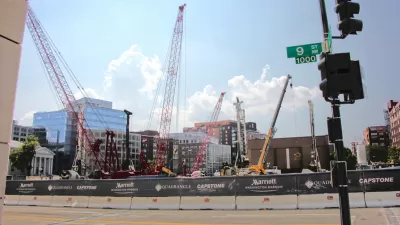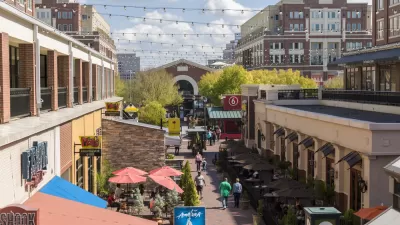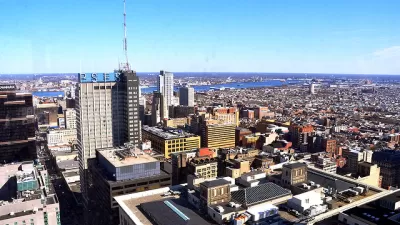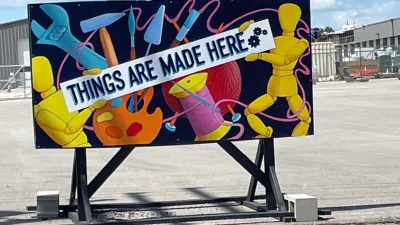The program, which gives tax credits to investors, has resulted in added jobs, increased incomes, and low rates of displacement.

Oscar Perry Abello reports on new research from the Urban Institute that analyzes the effects of the federal New Markets Tax Credit (NMTC), a program established in 2000 that "provides an incentive for investment in low-income communities." According to the Tax Policy Center, "NMTC investors provide capital to community development entities (CDEs), and in exchange are awarded credits against their federal tax obligations." The study, which looked at 5,746 investments in the program's first round, "finds the New Markets Tax Credit program does what it promises, most of the time, and doesn’t seem to cause displacement in the way that many fear the newer Opportunity Zones tax incentives may."
Between 2001 and 2017, investors—mainly large banks—received $12.2 billion in tax credits, which translated into $107 billion in total investment. In terms of uses, retail projects proved most popular with 17% of projects. "Manufacturing and food processing projects came in next, at 828 investments, followed by 719 office or professional service projects, 619 health care facilities projects, and 600 school and child care projects. The rarest were investments into financial intermediaries that serve low-to-moderate income communities, like Hope Credit Union."
The type of project can dictate the number and quality of jobs created, as well as the project's impact on the broader community. "Hope Credit Union used New Markets Tax Credits to grow during the Great Recession, going from less than ten branches to nearly 30 across the Deep South — creating or preserving a good number of jobs internally, but also having an even larger indirect impact by preserving access to credit in many communities that lost all other banking providers." The study also found an average of "17.7 new firms and 100 new jobs" in census tracts with NMTC projects and "a $562 increase in median incomes for some census tracts." The research showed little displacement in NMTC neighborhoods, with "only a modest increase in the turnover rate."
To implement similarly successful programs, the researchers recommend a "rigorous process to certify eligible projects" and "sizing incentives based on potential impact, as opposed to tying incentives to potential rise in property values–as is the case with Opportunity Zones."
FULL STORY: Who Benefits From the New Markets Tax Credit? New Research Dives Into 5,000 Projects to Find Out

Study: Maui’s Plan to Convert Vacation Rentals to Long-Term Housing Could Cause Nearly $1 Billion Economic Loss
The plan would reduce visitor accommodation by 25,% resulting in 1,900 jobs lost.

North Texas Transit Leaders Tout Benefits of TOD for Growing Region
At a summit focused on transit-oriented development, policymakers discussed how North Texas’ expanded light rail system can serve as a tool for economic growth.

Why Should We Subsidize Public Transportation?
Many public transit agencies face financial stress due to rising costs, declining fare revenue, and declining subsidies. Transit advocates must provide a strong business case for increasing public transit funding.

How to Make US Trains Faster
Changes to boarding platforms and a switch to electric trains could improve U.S. passenger rail service without the added cost of high-speed rail.

Columbia’s Revitalized ‘Loop’ Is a Hub for Local Entrepreneurs
A focus on small businesses is helping a commercial corridor in Columbia, Missouri thrive.

Invasive Insect Threatens Minnesota’s Ash Forests
The Emerald Ash Borer is a rapidly spreading invasive pest threatening Minnesota’s ash trees, and homeowners are encouraged to plant diverse replacement species, avoid moving ash firewood, and monitor for signs of infestation.
Urban Design for Planners 1: Software Tools
This six-course series explores essential urban design concepts using open source software and equips planners with the tools they need to participate fully in the urban design process.
Planning for Universal Design
Learn the tools for implementing Universal Design in planning regulations.
City of Santa Clarita
Ascent Environmental
Institute for Housing and Urban Development Studies (IHS)
City of Grandview
Harvard GSD Executive Education
Toledo-Lucas County Plan Commissions
Salt Lake City
NYU Wagner Graduate School of Public Service





























